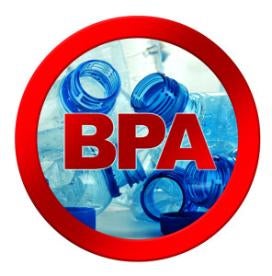California’s Office of Environmental Health Hazard Assessment (OEHHA) recently took a further step toward expanding the scope of state Proposition 65 regulations to out-of-state online retailers that sell into California when it issued an emergency regulation under Proposition 65 for canned and bottled foods and beverages containing bisphenol A (BPA).[1] The emergency regulation provides recommended “safe harbor” warning language for products containing BPA, a substance commonly used to line food containers, including metal cans, bottle caps, and jar lids, and requires retailers—including online retailers if the products are offered for sale in California—to place warnings at checkout areas explaining that exposure to BPA is known to cause reproductive harm to women.
The emergency BPA regulation appears to be part of a larger effort to update Prop 65 to address consumer goods sold online. Recent consent judgments signed by businesses that violated Prop 65 have require the businesses to provide online warnings, even though the current statute and regulations do not address sales of products over the Internet.[2] Additionally, OEHHA has proposed an amendment to California’s regulations governing Prop 65 warnings that would require online retailers to clearly warn consumers of all products containing listed chemicals before consumers complete their online purchases.[3]
Here is a brief background on Prop 65, the emergency regulation, and the online warning requirements.
What is Prop 65?
Prop 65 is a California right-to-know law, requiring businesses to warn consumers of potential exposures to carcinogens and reproductive toxicants. For this alert, Prop 65 has two relevant features:
-
a list of chemicals known to cause cancer and reproductive harm; and
-
a requirement that businesses provide individuals a clear and reasonable warning before knowingly and intentionally exposing them to any chemical on that list.[4]
Businesses selling products containing listed chemicals are required, with few exceptions, to warn consumers if the chemical in question was listed at least 12 months ago. OEHHA listed BPA as a reproductive toxicant on May 11, 2015. As a result, the BPA warning requirement took effect on May 11, 2016.
Businesses that fail to provide clear and reasonable warnings face penalties of up to $2,500 per day for each day of the violation, and can be court-ordered to stop violating Prop 65.[5] To ensure their warnings are clear and reasonable, businesses can adopt the warnings endorsed by OEHHA in the California Code of Regulations.[6] Prop 65 also contains “safe harbor” provisions that allow businesses to show that their products contained Prop 65 substances in quantities too low to trigger a warning. However, OEHHA has not identified a “safe harbor” quantity for oral exposure to BPA; as a result, a Prop 65 defendant would have to show that exposure to 1000 times the amount of BPA from its product would have no observable effect. The most prudent course therefore is to provide a Prop 65 warning whenever the packaging of a bottled or canned food or beverage product contains any amount of BPA.
The standard Prop 65 warning for consumer products containing reproductive toxicants calls for warnings to be provided “prior to exposure,” which can be satisfied by posting a warning on or near the product in question (such as a label or a shelf sign) that reads, “WARNING: This product contains a chemical known to the State of California to cause birth defects or other reproductive harm.”[7]
OEHHA Requires More Detailed Warnings for Canned and Bottled Foods and Beverages Containing BPA
The BPA regulation requires businesses to adopt warnings that are more detailed than typical Prop 65 consumer product warnings. OEHHA’s warning for canned and bottled foods and beverages lists BPA by name, provides details on which products contain the chemical, and provides a website consumers can visit for more information:
“WARNING: Many food and beverage cans have linings containing bisphenol A (BPA), a chemical known to the State of California to cause harm to the female reproductive system. Jar lids and bottle caps may also contain BPA. You can be exposed to BPA when you consume foods or beverages packaged in thesecontainers. For more information go to: www.P65Warnings.ca.gov/BPA.”[8]
To satisfy the warning requirement, manufacturers, producers, packagers, importers, and distributors of canned and bottled foods and beverages must label their products or notify retailers that the product contains BPA. Manufacturers can notify their retailers directly, through an authorized agent, or through a trade association. Additionally, manufacturers, producers, packagers, importers, and distributers must provide or offer to provide to the retailer, free of charge, all the warnings necessary to comply with the emergency regulation. Several trade associations have established websites containing lists of BPA-containing products and the warnings for those products.
Online Warning Requirements
The placement of the warnings is different in the BPA regulation, too. Instead of shelf signs, OEHHA requires retailers to post BPA warnings at each “point of sale,” and for this regulation it defines “point of sale” as any area where food and beverages are paid for in a retail space, including checkout pages on websites. Online retailers can comply with the emergency BPA regulation by warning consumers on the product display page, on the checkout page, or elsewhere before the purchase is complete, provided that the warning is prominently displayed. This requirement presumably applies to both instate and out-of-state online retailers; according to the Attorney General, “[t]he requirement to provide a consumer warning applies regardless of whether a business is located in California or out-of-state, as long as its products cause exposures to individuals in California.”[9] Although the Attorney General was discussing out-of state manufacturers, the broad statement seemingly applies to all out-of-state businesses, including out-of-state online retailers.
OEHHA’s inclusion of website checkout pages in the definition of “point of sale” acknowledges that today many products are purchased over the Internet. As noted above, OEHHA is engaged in rulemaking that would amend the Prop 65 regulations to require online retailers to clearly warn consumers of all products containing listed chemicals before consumers complete their online purchases.[10] Once that amendment is approved—it is currently in the comment phase—online retailers would have two years to comply with the new warning requirements.
The BPA emergency regulation will remain in effect until October 15, 2016. OEHHA has indicated that it intends to commence a regular rulemaking process for a regulation addressing BPA before this emergency regulation expires; however, it has not yet issued a notice of rulemaking for the replacement regulations.
Tyler Williams also contributed to this article.
[1] 18-Z Cal. Regulatory Notice at 727 (April 29, 2016).
[2] See e.g., Leeman, Ph.D. v. Adams Extract & Spice, LLC, 2014 WL 4810136 (Cal.Super.), 4.
[3] 13-Z Cal. Regulatory Notice at 458 (March 25, 2016).
[4] Cal. Health & Safety Code § 25249.6 (West 2016)
[5] Cal. Health & Safety Code §25249.7 (West 2016)
[6] Cal. Code Regs. tit. 27, § 25603
[7] Cal. Code Regs. tit. 27, §§ 25603.1(b), 25603.2 (2016)
[8] Cal. Code Regs. tit. 27, § 25603.3(f) (2016)
[9] Response to Frequently Asked Questions, State of California Department of Justice, Office of the Attorney General, located at http://oag.ca.gov/prop65/faq.
[10] 13-Z Cal. Regulatory Notice at 458 (March 25, 2016).




 i
i


